by Ralph Taggart
Most sport gyroplanes aren’t beautiful or even cute, but there is no denying that they have a certain magnetic appeal. If you begin to respond to that appeal by talking with pilots about gyros, you soon discover that not many pilots sit on the fence when it comes to these little aircraft.
Gyro pilots unanimously believe that their aircraft are inherently safe and easy to fly. On the other hand, your typical aviator who has never flown a gyro will tell you that you must be out of your mind to even think about flying one of those unstable contraptions! Lets just say that opinions about gyros are polarized. The fact is that gyroplanes may have the most complex image problem in aviation.
When Igor Bensen began large-scale marketing of his Gyrocopter in the early 60s, much of the sales pitch involved three primary assertions:
- The aircraft was simple and affordable.
- Gyros cannot stall or spin and thus are inherently safer than fixed-wing aircraft.
- Gyros are really easy to fly.
At one level, all three assertions are true, but taken literally, they are also dangerously simplistic. There is no simple answer to the question of whether gyroplanes are safe to fly, any more than one could generalize about any aircraft, but we can learn a lot about gyros by looking at these seemingly simple points.
Simple or Not
My earlier columns in this series have emphasized the structural simplicity of the typical gyro airframe. They are simple, and fewer parts and components generally mean you can build one without having to take out a second mortgage on the house.
It would be a mistake, however, to equate structural simplicity with the dynamics of gyro flight. The physics of any rotary-wing aircraft are dauntingly complex.
Fortunately, you don’t need a comprehensive understanding of all that complexity to fly a helicopter or a gyroplane, but you do have to know the primary reasons why rotorcraft are different and take those into consideration when you fly. Its not particularly difficult, but it is quite different, and a failure to understand the differences can be fatal!
Stalls and Spins: The Rest of the Story
At some combination of airspeed and angle of attack, airflow over a conventional wing will separate, and the wing will lose its ability to generate lift; its your basic stall. If you stall the aircraft at too low an altitude for effective recovery, you can become a statistic.
A second consequence of stalling is that the aircraft may spin. Low-altitude spins are typically fatal, and you can even buy the farm from up high if you don’t know how to recover from a spin or your particular aircraft is difficult or impossible to recover.
The greatest danger from stalls and spins is obviously at low altitude, and the greatest hazard is encountered when maneuvering during takeoff and landing.
The rotor of a gyroplane is your wing, and it generates lift and control because it is autorotating. This rotation is generally independent of airspeed and angle of attack, so a gyroplane cannot stall. If you fly the aircraft slower than its minimum level flying speed (10-25 knots for most sport gyros), the aircraft will simply descend without any abrupt break and with no loss of rotor control power.
As you must stall an aircraft to cause a spin, it follows that gyros wont spin. Since stall/spin accidents account for most of the fatalities in fixed-wing aviation, it would seem to follow that gyros must be safer than conventional fixed-wing aircraft. But here is where some of those differences I noted earlier become critically important.
While a gyro is immune to stalls and spins, there are aspects of stability and control related to the rotor system that pose hazards just as potentially dangerous as stalls and spins in a fixed-wing aircraft and perhaps even more so.
Unlike a helicopter, the speed of a gyroplane rotor in flight is largely self-governing and does not require continuous attention on the part of the pilot. Lets assume that the rotor operates near 350 rpm in normal flight. This rotational speed provides the following positive benefits:
- The lift to sustain the aircraft, independent of airspeed
- Control in roll and pitch, also independent of airspeed
- Structural rigidity that permits semi-flexible rotor blades to support the weight of the aircraft
- Forces that stabilize operation of the rotor despite wide variations in air loads applied to different parts of the rotor disc.
All of this is a result of the relatively constant autorotation of the blades, powered by the steady movement of the relative wind up through the rotor disc. In gyroplane terminology, this is what happens when the rotor is loaded, meaning a combination of the G loads applied to the rotor system and the dynamics of airflow through the rotor disc.
Heart of the Problem
Here is an area where the differences between gyros and fixed-wing aircraft become extremely critical. In a fixed-wing aircraft, you can unload the wing without serious consequences. In fact, you may want to unload the wing to prevent a stall. This can happen if you push the stick forward at the top of a zooming climb or at the top of every porpoising cycle if you let the aircraft get into pilot-induced oscillation (PIO).
But note this well: In a gyroplane, unloading the rotor system has potentially disastrous consequences.
Fatal Sequence
As the rotor is unloaded, both control thrust and the drag of the rotor disc fall off rapidly. With a high engine thrustline (relative to the vertical c.g. and center of drag) and/or with a momentary gust that can increase fuselage drag, the gyro can pitch forward and tumble. Such tumbling, also known as bunting over, can occur almost instantly. There is no possible recovery, and bunting over is invariably fatal.
Rotor speed can decay rapidly when the blades are unloaded, leading to rotor instability or flap. This in turn can lead to loss of rotor control and invariably results in a blade strike where one or both blades impact the prop or tail components, further slowing the blades, not to mention the damage to blades and other parts of the airframe. In-flight rotor strikes are also typically fatal.
Almost all gyroplane fatalities involve some combination of rotor strikes and tumbling. You don’t need to worry about stalls or spins in a gyro, but unloading your blades is just as deadly as a low-altitude stall in a fixed-wing aircraft, and it could happen at any altitude. A big amount of gyroplane flight instruction is involved in making sure you avoid that nasty bunting over.
Easy to Fly
Most fixed-wing pilots would never think of strapping into a helicopter and trying to take off without getting plenty of flight instruction. Unfortunately, these simple gyroplanes look quite conventional by comparison.
The gyro control system consists of a stick that handles pitch and roll and rudder pedals to control yaw. The gyro is, at one level, a simple stick-and-rudder machine. Unfortunately, this conventional control system, coupled with the fact that gyros are easy to fly, has led many experienced pilots to think that they can get into a gyro and fly it around the patch without the benefit of instruction. Much too often, the result is a fatality that is chalked up against the flight characteristics of gyroplanes instead of the real cause: stupidity on the part of the supposedly experienced aviator.
While a gyro control system is conventional in what it controls, how you use the controls is quite different in critical areas compared to fixed-wing practice. For example, an airplane pilot has one built-in, reflexive response if things start to go wrong: Get the nose down right now and, if possible, crank in more power.
A typical gyroplane is highly responsive in pitch, and if the fixed-wing pilot starts to porpoise, the chances are high that the would-be gyro pilot will push the stick forward vigorously, often with the application of power. But it should be obvious from the discussion on unloading the rotor that this is precisely the wrong thing to do!
In contrast, a properly trained gyro pilot has a single, reflexive response to the onset of instability: Pull the stick back to load the blades and reduce power! The result is virtually instant recovery–but note that the proper use of the controls is precisely opposite of what a fixed-wing pilot would do in the same situation.
In summary, gyroplanes are easy and safe to fly if you get competent instruction and fly like you were instructed. As recently as 10 years ago, there were few aircraft suitable for dual gyro instruction, and there were few qualified gyro instructors.
Today there is a wide range of two-seat machines, some of which are illustrated here. The Popular Rotorcraft Association (PRA) was instrumental in obtaining FAA waivers for the use of amateur-built two-seaters for paid gyro flight instruction, and the pool of gyro-rated CFIs is at an all-time high and growing steadily. To locate an instructor near you, call the PRA office at 219-353-7227 or e-mail [email protected]. You can also find a list of instructors via the PRA Internet website at http://www.pra.org/.
For those planning to go the ultralight gyroplane route, there are a number of gyro-rated BFIs (contact the United States Ultralight Association or the Aero Sports Connection). Most gyro-rated CFIs will also provide instruction to potential ultralight pilots, so that route is also available. Either way, gyro instruction can be a lifesaver.


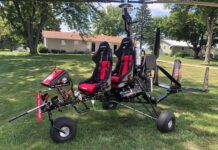

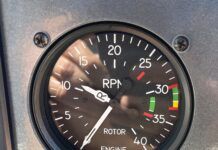

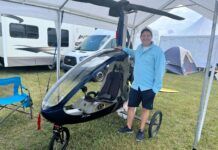
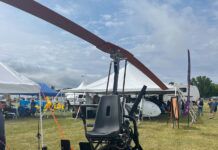
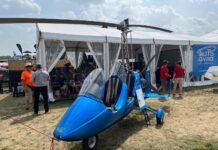
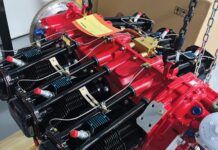





I have a few hours as a fixed wing pilot, but I have not flown in 40 years (that may be good). I now have the bug to fly again, inexpensively and safely, and I am thinking that a gyro may be the new toy I need. Any resources in northern GA?
Did you ever find anything? Currently looking in the same area.
In this video from 7:05 https://youtu.be/OWVbwyN_GgI?t=419
the pilot performs several manuvoeuvres that I thought would induce unrecoverable bunting as described in your article. However he recovers each time in spectacular fashion. Is it only because he enters the nose-down drop while flying backwards in high wind (and does not increase power while nose-down) thst he can do this?
All he did was normal for gyros. Dump the nose, increase airspeed and therefore rotor speed, then use that stored energy to generate lift when flaring to a smooth landing. Nothing strange, it’s normal procedure in gyros.
I was wondering if anyone was going to correct Google on the point that gyros are dangerous because of stalls and spins. Very good article. Mike David. 2000+ hours in gyros. Russell Kansas